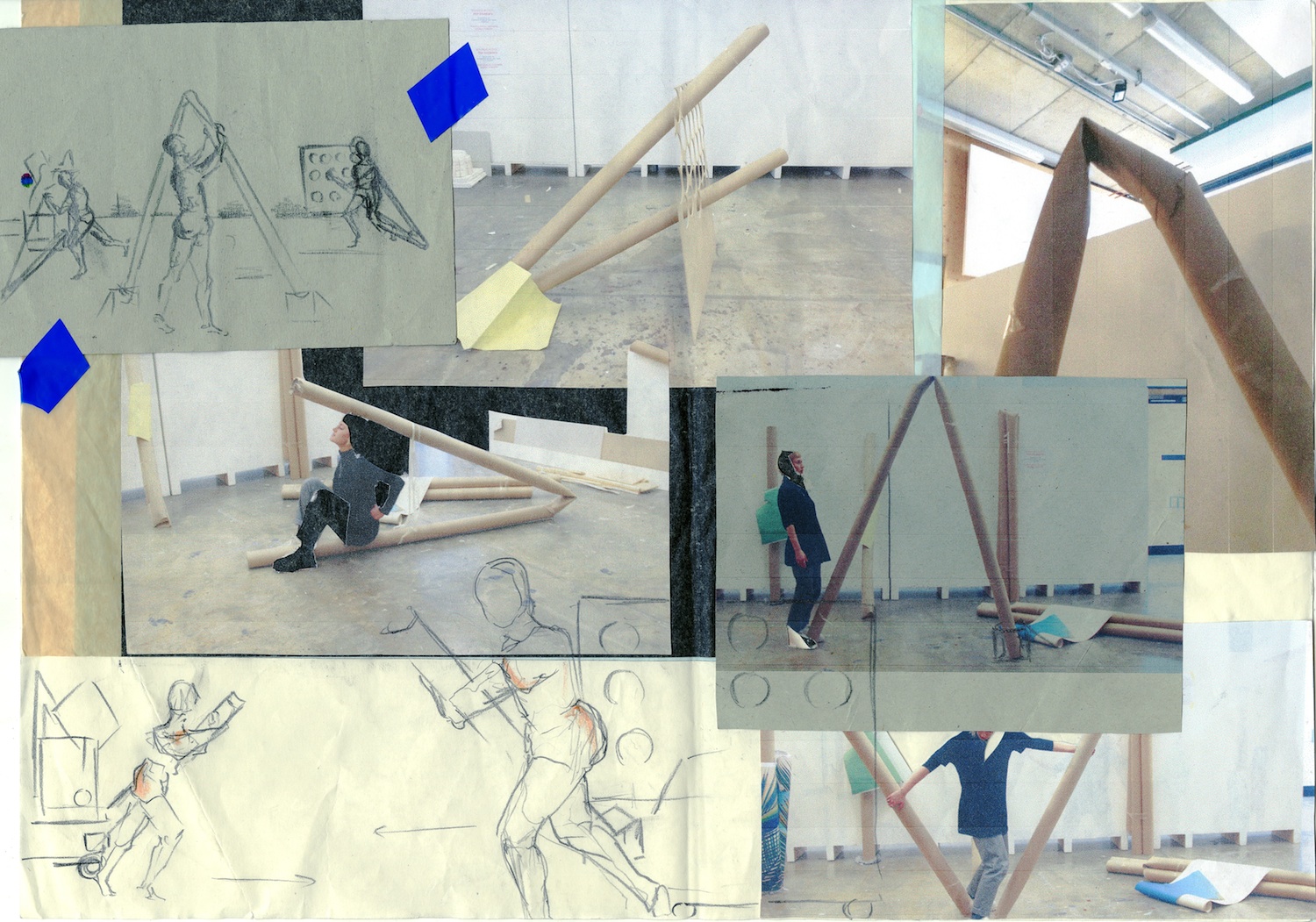
Korallia Stergides is one of the second year BA Performance Design and Practice students collaborating with Rambert School of Ballet and Contemporary Dance choreographer Arielle Smith for Design for Dance 2015, taking place 4 to 7 March.
Tell us about what you‘ve been working on.
Korallia: I’ve been working on the set and costume design for a dance piece called ‘Particle Fever’ with student choreographer Arielle Smith and Dancers from the Rambert School. The dance piece is based on the subject of particles and their environment.
Each dancer represents a particle and their movements aim to question the particle’s role, whether they form a molecule, child or animal. The dancers construct a playground landscape of structures, ambiguous of location, in which they interact and play within.
What were your intentions for the set/costume design in this performance?
Korallia: My intentions for this piece were to create a playground of objects that could be manipulated by the dancers. I wanted to demonstrate a primitive and childlike quality, I have intentionally used discarded materials, I wanted the physicality and structure of the set to echo the malleability of movement throughout the dance.
What were your initial reactions to designing set/costume for contemporary dance?
Korallia: Design for Dance is a part of what drew me to study BA Performance Design and Practice. I was interested in learning about the language and skill I would develop in working in collaboration with a choreographer. It is also great to see how my alternative method of work translates on another platform.
Tell us about the processes behind Design for Dance.
Korallia: We were allocated a school and were shown five dances. We were then given a chance to discuss which one we each wanted to work on. My initial reaction before I saw the dances was to choose the one that seemed the closest to my interest in the everyday action and practice – I wanted one that would be funny. Once we had chosen our performances, it was really up to us to communicate and collaborate with the choreographers in order to start designing.
How did you find collaborating with a choreographer?
Korallia: The choreographer and I were very collaborative from the beginning.I would show her collages, rough models or objects that I found in order to generate a final idea in which we were both happy with. The piece has a lot of movement and I had to really communicate with her in terms of where the set pieces would go if we were to make them work alongside a balanced composition of body and sculpture. If it were up to me the whole stage would be flooded with things. However I feel that certain restrictions allowed for a more refined outcome, which really turned out better!
What have you learnt from working on this project?
Korallia: It has challenged me to find methods of communicating my work, and really develop an efficient way of working. It has given me the chance to expand my practice on a much larger scale, and other context of space. I hadn’t used the wood workshop before, and now I am confident in finding ways other modes of experimenting and making. I learnt a lot from working with a choreographer, I really got a magnified sense of looking at the body in space and challenging myself as to how I would respond to it.
What were the main challenges you faced?
Korallia: It was a challenge, I wanted the set to look unstable but be practically, stable. For example, I started with the idea that I wouldn’t use screws but I had to eliminate that thought for health and safety reasons that I hadn’t taken into account – otherwise we’d be yelling timber!
Do you have any upcoming plans for set/costume design?
Korallia: I am currently working on a project with some students from Fine Art on a project called Art Camp. This will probably involve me making objects or costumes for an expedition we are planning.
Design for Dance is a performance dating back to the 1960s and is a brilliant demonstration of dance innovation from emerging designers, choreographers and dancers. This year will see collaborations between second year BA Performance Design and Practice students and student choreographers from London Studio Centre, Rambert School of Ballet and Contemporary Dance and the Central School of Ballet.
Tickets are currently on sale for Design for Dance 2015 and are available through the Platform Theatre box office.
More:
– Follow Korallia on twitter: @korallia
– BA Performance Design and Practice





